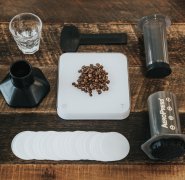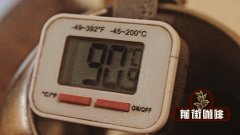The Development History of Coffee Bean Dryer: pan, Roller, Commercial Bean Dryer, Hot Air Bean Dryer
The era of pan baking
Coffee has a long history. The first people to roast coffee beans into drinks can be traced back to Central Africa and the Middle East hundreds of years ago, and then the Ottoman Turkish Empire and European colonists brought coffee to the world.
The earliest bean roasting tools were thin, perforated pans that roasted directly over a high fire, and coffee bakers used spoons to turn the beans and make sure the roasting was uniform.
Only a small amount of the whole pot of coffee beans will be roasted at the same time, which means that the roaster who turns the coffee beans needs to be very focused throughout the roasting process.
The process produces a lot of smoke and silver dust, and, as expected, the roasted coffee is uneven and uncontrolled.
Due to the chaotic and inconsistent results of the stir-frying process, it is conceivable that these coffee lovers will begin to look for new ways to bake coffee beans.
The era of drum bean dryer
According to relevant historical records, the drum dryer first originated in Cairo, Egypt, in the 17th century. Such equipment allows beans to be placed in a semi-enclosed space, so that the heat in the drum can be released, and the handle of the drum can be rotated. so that the drum dryer can be moved more evenly when it comes into contact with the fire.
This design will also reduce the amount of smoke emitted, making coffee bakers more comfortable. After that, some adjustments have been made to the drum bean dryer, but its central concept remains unchanged. With the development of colonialism, drum bean dryers were designed all over Europe and America.
Development of Commercial Bean Dryer
Coffee roasting is also affected by industrialization. In the 19th century, although many people continued to bake their own coffee at home, commercial bean dryers were patented in the United States and Europe.
Many early commercial bean dryers simply put huge cylinders on top of the heat source, but before the introduction of natural gas as a source of energy in cities, the heat source was always wood or coal, and the roasted coffee was full of smoke, so, when natural gas is available, it quickly becomes the preferred heat source for this kind of bean dryer.
Richard Evans patented the first large coffee bean roaster in England in 1824. According to the book The Curious Barista's Guide to Coffee, it allows users to turn the entire cylinder upside down to expel roasted beans, and is equipped with a "sampler" to take out some of the coffee beans during roasting to confirm their roasting status.
The book also states that James Carter applied for a patent for a "pull-out" bean dryer in Boston in 1846. This is an iron cylinder fixed in the boiler. When baked, you must pull the whole drum out of the boiler and open the door so that the roasted coffee can be poured on the floor or in a tray to cool, but this is an inefficient and dangerous method.
In 1864, Jabez Burns obtained a patent for a commercial coffee roaster in the United States. Burns is designed to cover a closed cylinder with a brick structure, it has an opening mechanism to empty the coffee beans without removing the cylinder from the flame, and the double helix design inside the cylinder can evenly divide the coffee beans, these innovations make the baking procedure more consistent and safer.
Burns's company later added a cooling tray to the front of the bean dryer and installed a fan beneath it to blow cold air into the coffee beans, laying the foundation for modern coffee dryers.
In 1868, Alexius van Gulpen founded a company in Germany with Theodor von Gimborn and Johann Heinrich Lensing, which later developed into what is now Probat. They patented the fast coffee bean roaster in 1880, which the company said was important for the future development of drum bean roasters.
The influence of Electric Power on Bean Dryer
With the increasing popularity of electric power at the beginning of the 20th century, the coffee roasting industry has also changed.
Electric drive means that baking becomes less labor-intensive, and because electroheating is more predictable than open fire, the baking results are more consistent and less dangerous. For the first time, the bean dryer can control the ability of coffee beans to be exposed to heat with a certain precision, and has a better ability to copy.
Hot air bean baking machine
Today, the drum bean dryer based on 19th century patent design is still the first choice for many people. But in the 1970s, semi-hot air or all-hot air bean dryers appeared on the market.
In a hot air bean dryer, the machine forces hot air through the sieve beneath the coffee beans, strong enough to blow up the coffee beans and transfer heat to them as they tumble. American chemical engineer Michael Sivetz applied for a patent for the design in 1976.
At that time, many bean bakers were less likely to choose hot air bakers because they could not provide the same baking quality, which was due to the fact that heat transfer only used convection rather than a combination of convection, conduction and radiation generated by drum baking machines.
The application of new technology
A better understanding of the chemical composition of coffee and what changes will occur in this process will contribute to the development of modern coffee roasting. The bean baking machine can better measure the factors and analyze the reasons for the success of baking. With the help of digital temperature and profile software and other technologies, baked beans can be more efficient and consistent than ever before.
But these innovations are still based on core inventions from more than a century ago. The bonuses of modern technology can help us better control baking, but they are essentially fine-tuning 19th-century drum bean roasters.
Over the past few decades, due to the efforts of many people and companies, bean baking equipment has been developed and improved. Without some counter-experiments, we will not have all kinds of delicious coffee that we like now.
In the future, we look forward to integrating more technologies into coffee roasting technology, and there may be exciting developments!
Important Notice :
前街咖啡 FrontStreet Coffee has moved to new addredd:
FrontStreet Coffee Address: 315,Donghua East Road,GuangZhou
Tel:020 38364473
- Prev

Use Philharmonic pressure for two minutes to complete cold extracted coffee how to use Philharmonic pressure to make cold brewed coffee
Philadelphia is one of the representative utensils of fine coffee, which is not only widely used but also easy to use, it is not easy to use it to make a bad cup of coffee, and it is also easy to experiment and create its own brewing formula. However, so far, it is mainly used in hot coffee. All this changed when the Philharmonic pressure Company announced its cold extract Philharmonic coffee recipe.
- Next

How to adjust the influence of Water temperature on Coffee influence of utensils on Water temperature
Water accounts for 94-98% of a cup of coffee, but in addition, water temperature (including minerals in water) can also affect the sweetness, bitterness and sour taste of coffee. Controlling the temperature of the cooking water is very important for people who like to flush by hand, but unfortunately, the water temperature is often adversely affected by insufficient training or the use of the wrong equipment. How does the water temperature affect coffee? The temperature of the water will be straight
Related
- Beginners will see the "Coffee pull flower" guide!
- What is the difference between ice blog purified milk and ordinary milk coffee?
- Why is the Philippines the largest producer of crops in Liberia?
- For coffee extraction, should the fine powder be retained?
- How does extracted espresso fill pressed powder? How much strength does it take to press the powder?
- How to make jasmine cold extract coffee? Is the jasmine + latte good?
- Will this little toy really make the coffee taste better? How does Lily Drip affect coffee extraction?
- Will the action of slapping the filter cup also affect coffee extraction?
- What's the difference between powder-to-water ratio and powder-to-liquid ratio?
- What is the Ethiopian local species? What does it have to do with Heirloom native species?

